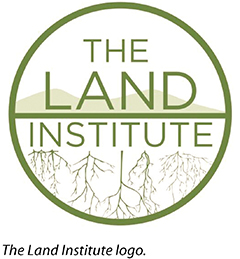 Q: What is the mission of The Land Institute? How does it contribute to our understanding of cereal science in the context of the Global Food System (GFS)?
Q: What is the mission of The Land Institute? How does it contribute to our understanding of cereal science in the context of the Global Food System (GFS)?
A: The Land Institute is a 501(c)(3) nonprofit organization based in Salina, KS, that was founded in 1976. The institute’s goal is to create an agriculture system based on perennial grain and pulse crops in order to produce ample food and reduce or eliminate the negative impacts of modern crop production. The Land Institute believes it is possible to provide staple foods without destroying or compromising the cultural and ecological systems upon which we depend, but only if we understand and work within the constraints and capacities of those natural systems.
The Land Institute is led by a growing team of plant breeders and ecologists and engages in more than 50 partnerships worldwide. The organization’s core values of sustainability, perenniality, and diversity are shared by a group of 37 full-time staff members.
Q: What is the focus of The Land Institute’s work? In what ways does it bring innovation to the field of cereal science? How can it shed light on challenges and opportunities in the GFS?
A: Since the advent of agriculture about 10,000 years ago, humanity has come to depend on annual plants that live for a single year. This annual growth habit, which requires regular replanting, describes all of the major grain crops on which we now depend for food. Annual replanting means that living roots are typically not present for much of the year. As a result, soil carbon decreases, expensive nutrients like nitrogen slip away into ground and surface waters, and weeds have the opportunity to take hold. The Land Institute has a new vision for grain agriculture; one in which crop plants produce abundant harvests, but also continue to live for many years without reseeding. The extensive long-lived root systems of these plants would improve soil health by sequestering carbon extracted from the atmosphere, prevent soil erosion, reduce reliance on herbicides for weed control, and provide improved wildlife habitat year-round. Deeper rooted plants could also improve the stability of food production in the face of an increasingly erratic climate.
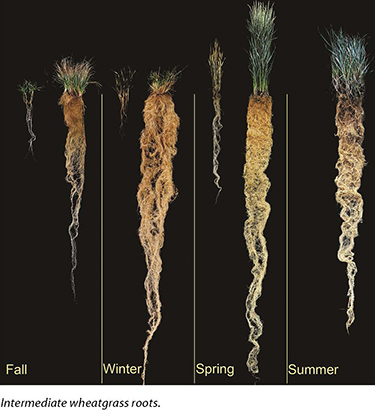 Because perennial grain crops were not cultivated previously in the course of human history, they must now be developed using modern plant breeding techniques. We are using two approaches to breed perennial grain, pulse, and oilseed crops.
Because perennial grain crops were not cultivated previously in the course of human history, they must now be developed using modern plant breeding techniques. We are using two approaches to breed perennial grain, pulse, and oilseed crops.
Domestication of Wild Perennial Plants—Large, diverse populations of the crop are grown, and plant breeders select the best individuals for the traits of interest. These individual plants are then cross-pollinated, and the resulting seeds are planted to produce the next improved breeding population. This method can now be accelerated using genome sequencing, molecular tools, and other advanced approaches.
Perennialization of Existing Annual Crops—The second method of breeding new perennial crop species is to cross an existing annual grain crop with a wild perennial cousin. When successful, these “wide hybrid crosses” produce plants that maintain seed yield and quality similar to the annual parent, while inheriting the perennial lifestyle from the other parent. Some programs currently underway include perennial wheat, rice, grain sorghum, and sunflowers.
Additionally, The Land Institute is researching legume crops such as alfalfa, sainfoin, and kura clover as potential candidates for inclusion in diverse agroecosystems as a sustainable method of enhancing soil fertility. For all crops in development, scientific collaborators at institutions around the world must work together to develop new growing methods, processing techniques, and foods using new perennial crops.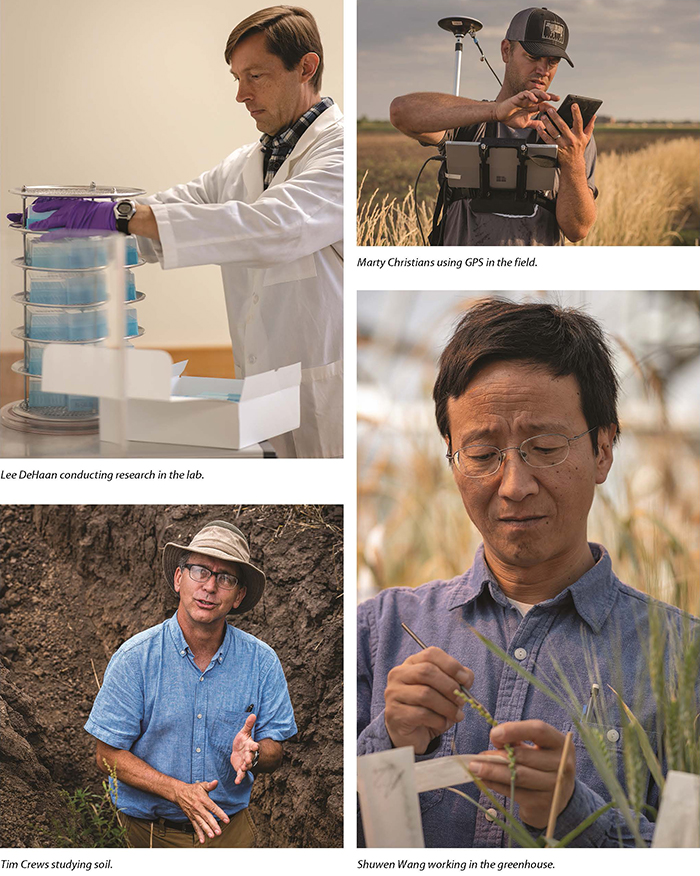
Q: What are the core capabilities of The Land Institute? How many and what types of scientists does the organization employ?
A: The Land Institute is in a unique position to comprehensively study the mechanisms of perennial agriculture on the timeframe that is needed both in terms of development and implementation. The Land Institute’s breeding programs are currently led by eight Ph.D. lead scientists, including plant breeders, ecologists, and geneticists. These researchers, in turn, are assisted by a team of technicians and seasonal undergraduate interns. Our facilities include the necessities of agronomic and plant breeding research: greenhouses, laboratories, threshing and seed cleaning equipment, and research-scale field equipment.
Q: When was The Land Institute founded, and who were the key leaders who helped create the organization? What are some key milestones in its growth?
A: The Land Institute was cofounded in June 1976 by Wes and Dana Jackson. Education was an integral part of the organization’s objectives, and the internship program was initiated by September of that same year.
The Land Institute’s current vision for agriculture was born out of a visit by Wes Jackson to the Konza Prairie Biological Station. Jackson, comparing the architecture of the current and prevalent agricultural system to that of the prairie ecosystem, noted the crucial distinctions of the prairie ecosystem’s diversity, resiliency, sustainability, and perenniality.
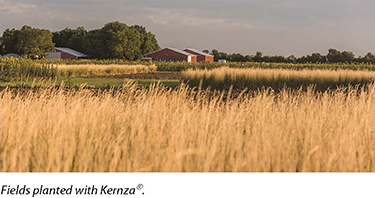 Following this insight, the Land Institute began honing and intensifying its research focus on developing perennial grain and oilseed crops. Around the year 2000 the organization began hiring a team of plant breeders and ecologists to develop new perennial cropping systems.
Following this insight, the Land Institute began honing and intensifying its research focus on developing perennial grain and oilseed crops. Around the year 2000 the organization began hiring a team of plant breeders and ecologists to develop new perennial cropping systems.
Education continues to be key to the Land Institute’s identity, and a graduate research fellowship program was created in 1998. The Land Institute welcomes interns and research residents each year.
In 2016 our first perennial grain was used to make a widely marketed product—a beer developed by Patagonia Provisions using grain from intermediate wheatgrass (marketed as Kernza® grain). In recent years, the grain has been used in several other beers and in bread and other dishes served in restaurants. Although production acres are still limited, we are excited to see a perennial grain moving from fields to glasses and plates!
Q: In what ways has The Land Institute collaborated with the Cereals & Grains Association? How does the association enable the organization’s work, and how does The Land Institute support the Cereals & Grains Association?
A: Our organization’s areas of expertise are plant breeding, genetics, and agroecology. For grain and food science work, we have relied on collaborations with scientists working in academia and private industry. Our expanding work with perennial grains has been presented at Cereals & Grains Association conferences and in publications. We believe this will be an effective strategy to expand our collaborations and build awareness of the new grains that are currently being developed. Clearly, we will rely on expertise within the Cereals & Grains Association community to help bring perennial grains from the field to the plate.
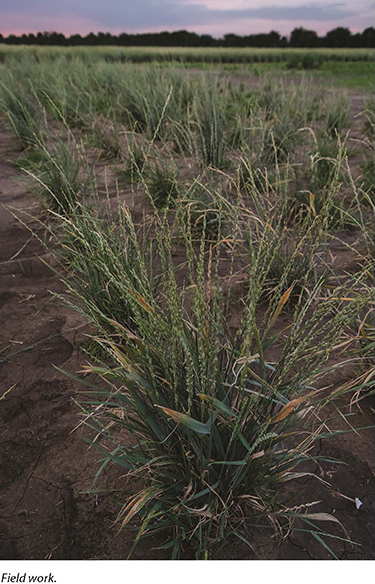 Q: How is The Land Institute engaged in government–industry–academia partnerships to enable innovation? Has the organization explored other partnerships or collaborations?
Q: How is The Land Institute engaged in government–industry–academia partnerships to enable innovation? Has the organization explored other partnerships or collaborations?
A: The Land Institute recognizes that collaboration is key for our vision of perennial agriculture to be successful. In the long run, the primary metric of success for The Land Institute’s work will be acres of land converted from low-diversity annual grains to high-diversity perennial grains. Achieving success on an extensive landscape scale will require many more researchers to join the effort. In 2019, that number reached 53 partners in 20 countries on 6 continents. We continue to see interest in perennial grain and ecological intensification research grow among our colleagues internationally.
Our research partners and collaborators are helping to fully develop diverse perennial grain agriculture. Crop breeding is site specific, so we need programs to develop new perennial grain varieties based in countries around the world. Furthermore, there are many candidate perennial grain species that are waiting for research teams to begin working with them.
Although The Land Institute is headquartered in Salina, KS, our global partnerships are spreading our researchers’ knowledge and botanical germplasm across the globe and diverse climates and soil types. With our partners, we are dedicated to ensuring worldwide food security without compromising ecosystem integrity through locally adapted, perennial agriculture systems.
